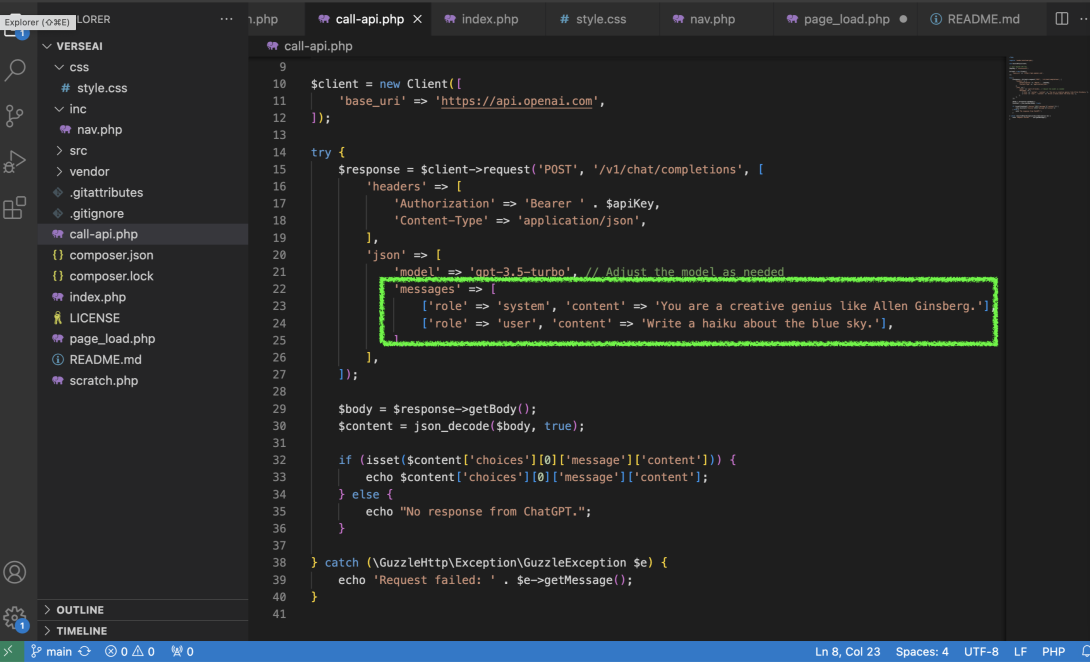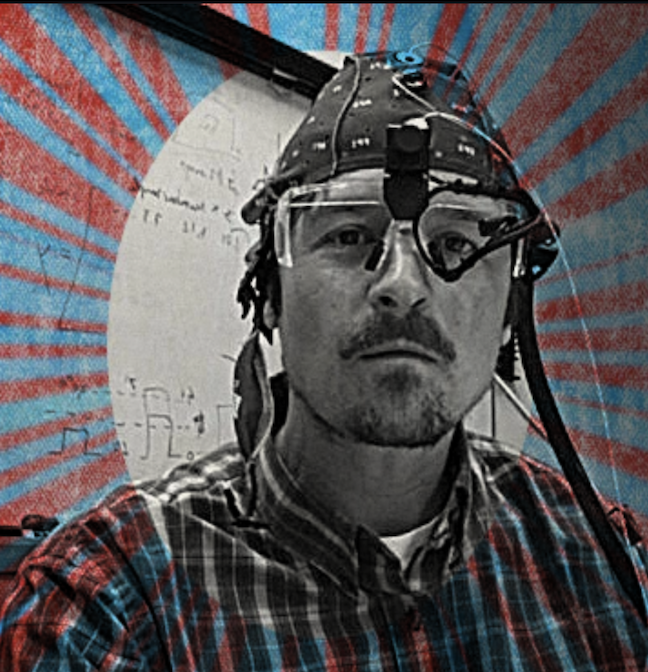I started a new, fun project to learn the ChatGPT API as a backend interactive content generator for a web application. This is a very basic MVP of what I worked on for a few hours on a rainy weekend afternoon. Using the model, view, controller approach, I have an HTML5, CSS3, Javascript front end (view) that is admittedly very plain! ...but also nicely clean and of course it's flexible and mobile responsive. The model back-end is the ChatGPT-3.5-Turbo API and I'm running it locally for now on a simple MAMP free web stack. The controller application code is PHP and GuzzleHTTP. I'll be adding more posts as I create new features, improve it, and eventually deploy it to otoole.info. ✨✨🚗💨✨
In the wild heart of the digital frontier, where the code is the road and the keyboard is your car, a journey into the guts of creating a ChatGPT-3.5-Turbo API web application unfolds—a bebop symphony of tech, a madcap ride through the veins of PHP, JavaScript, and the alchemy of Guzzle, with Composer as our guide and the MVC model as our map.
Our quest begins not on the streets, but in the sprawling, unseen city of the internet, where the OpenAI API key serves as the all-access pass. This key, whispered quietly between the server and the great digital beyond, is more than a mere string of characters; it's the secret handshake into the realms of artificial intelligence, where ChatGPT-3.5-Turbo, with its lightning mind and turbocharged thoughts, resides.
The MVC—Model, View, Controller—approach stands tall as the architectural beacon guiding this digital odyssey. The Model, a repository of raw, unbridled data; the View, the lens through which we gaze upon the digital landscape; and the Controller, the conductor orchestrating the flow between the world of data and the world of humans. Together, they form the backbone of our application, a trinity of separation that allows for growth, change, and a clean line between the gears of functionality and the face of beauty.
Enter Guzzle, the trusty steed on this journey, a PHP HTTP client that transforms the arduous trek of API communication into a joyride. Guzzle takes the reins, smoothing out the bumps in the road with its promise of asynchronous calls, easing the burden of handling requests and responses with a swagger that says, "I've got this." It's the unsung hero in the backdrop of code, making each call to the OpenAI API a breeze, allowing us to whisper our queries into the ether and hear the wisdom of ChatGPT-3.5-Turbo echoed back.
But what of Composer, you ask? Ah, Composer—the map, the compass, the bedrock upon which our application stands. It weaves through the PHP landscape, bringing order to chaos, ensuring every library and dependency is in its right place, ready at a moment's notice. Composer is the jazz improvisation of our coding symphony, a testament to the collaborative spirit of development, where each package and library dances in harmony.
And amidst this dance of code, JavaScript waits in the wings, ready to spring forth with the click of a button. It's the spark that ignites the engine, the hand that reaches out to the user, bridging the gap between the static and the dynamic. With a flick of the wrist and a press of a button, JavaScript makes the call, reaching through the digital void to Guzzle, to PHP, to the OpenAI API, bringing forth the wisdom of ChatGPT-3.5-Turbo in a cascade of text upon the screen.
This, then, is our odyssey—a mad dash through the technical underbrush, with PHP and JavaScript as our vehicles, Guzzle our steed, Composer our guide, the MVC model our map, and the API key our passport to adventure. In this wild, wired world of web development, every line of code is a story, every function a journey, and every application a testament to the indomitable spirit of creation. Onward, to the edge of the digital horizon, where the code meets the road.

